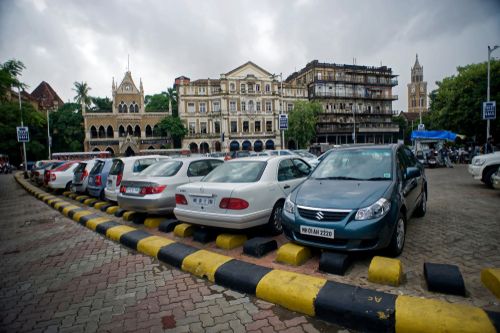Third-Party Liability Insurance Coverage
Written by Upstox Desk
4 min read | Updated on July 16, 2025, 14:32 IST

When it comes to motor vehicle insurance, there is often a mandatory requirement of insurance as per the Motor Vehicle Act, 1988. Many people comply with the mandatory requirement and opt for third-party liability insurance coverage. By taking up this coverage, anyone can drive legally on the Indian roads, as this is the bare minimum requirement.
This is an excellent insurance tool because it helps cover damages to third parties, compensation, and legal fees if your vehicle is involved in an accident. However, it does not cover anything beyond the third-party (and legal) compensation. So, if you expect that it will cover any repair costs or the insurance company would compensate you in any manner in case of theft or complete damage to your vehicle, you need comprehensive cover.
Let us find out more about third-party liability insurance coverage.
What Is Third-Party Liability Insurance?
Let us understand the basics first. Third-party liability insurance is a type of motor insurance that covers the legal and financial liabilities arising from injuries or damages caused to a third party by the insured vehicle. As per the MV Act, every vehicle in India must have at least this coverage.
Let us understand what is meant by the term ‘third-party’ here. It refers to any individual or entity, apart from the policyholder and the insurer, that is affected by the insured vehicle. Some common examples of third parties who can be part of an accident include pedestrians, passengers in another vehicle, or property belonging to someone else.
What Does Third-Party Insurance Cover?
Here is what is included in a third-party motor vehicle insurance cover. Broadly, it takes into account bodily injury or death of a third party, damage to property and legal liabilities arising out of an accident involving your vehicle.
Bodily Injury or Death of a Third Party
If your vehicle causes an accident that injures or kills another person (driver, pedestrian, or passenger), the insurance covers medical expenses, legal liabilities, or compensation as directed by the Motor Accident Claims Tribunal (MACT).
Property Damage
The policy compensates for damage to someone else’s property, like another vehicle, boundary wall, or shop. The standard limit for property damage is ₹7.5 lakh.
Legal Liabilities
This includes the costs of legal proceedings, compensation awards, and settlements related to third-party claims.
However, it does not cover any damages if you or your vehicle is damaged in the accident. The coverage is exclusive to the third parties involved only.
How Does It Work?
Let us understand how third-party liability insurance works:
Who Should Buy It?
Everyone needs third-party liability insurance because it is the minimum legal requirement as per the MV Act. In the absence of a valid third-party liability insurance, you cannot legally drive in India. Therefore, regardless of your vehicle type, usage, driving experience, and preferences, purchasing third-party insurance is mandatory.
Difference Between Third Party and Comprehensive Insurance
Here is a table that describes the differences between the two common forms of motor vehicle insurance:
| Feature | Third Party Insurance | Comprehensive Insurance |
|---|---|---|
| Coverage | Only third-party injury/property | Includes third-party + own damage |
| Legal Requirement | Mandatory | Optional |
| Premium Cost | Lower | Higher |
| Own Vehicle Protection | Not covered | Fully covered |
| Add-On Options | Not available | Multiple add-ons available |
Summing up
Third-party liability insurance is not just a legal formality; it’s a fundamental layer of protection for every vehicle owner. While it doesn’t cover your own damages, it ensures that others affected by your vehicle are compensated fairly. Affordable and essential, it promotes responsible driving and keeps you shielded from the financial fallout of unforeseen accidents.
FAQs
What is third‑party liability insurance?
Third‑party liability insurance (also called liability insurance) protects you if you're legally responsible for injury or property damage to someone else or their belongings.
Who is considered a "third party" under this insurance?
A "third party" is anyone other than the insured and insurer, such as another driver, pedestrian, passenger, or property owner, who is affected by your vehicle.
Does third‑party liability insurance cover damage to my own vehicle?
No, it only covers injuries to others or damage to their property and does not include any repair costs for your own vehicle.
Why is third‑party liability insurance required by law?
It is legally mandated so that victims of accidents caused by your vehicle are guaranteed compensation for their injuries or losses, even if the at-fault driver isn’t personally able to pay.
What expenses are covered under third‑party claims?
It typically covers medical bills, legal fees, court-ordered compensation, and repair costs resulting from third-party injuries or property damage.
About Author
Upstox Desk
Upstox Desk
Team of expert writers dedicated to providing insightful and comprehensive coverage on stock markets, economic trends, commodities, business developments, and personal finance. With a passion for delivering valuable information, the team strives to keep readers informed about the latest trends and developments in the financial world.
Read more from Upstox
Upstox is a leading Indian financial services company that offers online trading and investment services in stocks, commodities, currencies, mutual funds, and more. Founded in 2009 and headquartered in Mumbai, Upstox is backed by prominent investors including Ratan Tata, Tiger Global, and Kalaari Capital. It operates under RKSV Securities and is registered with SEBI, NSE, BSE, and other regulatory bodies, ensuring secure and compliant trading experiences.